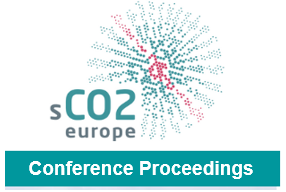Study of the influence of additives to CO2 on the performance parameters of a sCO2-cycle
Compared to existing technologies, thermodynamic cycles based on supercritical carbon dioxide (sCO2 ) are leading to higher efficiencies and a more compact design of the components. However, it is possible to improve the performance of sCO2-based power cycles by using mixtures of CO2 with suitable additives, as also discussed in the literature for some applications such as concentrated solar power plants or the usage of geothermal heat.
The large variety of possible fluid combinations makes an experimental investigation of all conceivable additives considerably difficult. Therefore, a more viable alternative is to set up a model for the power cycle and conduct a screening in order to identify promising candidates for working fluid mixtures. In a next step these could subsequently be experimentally verified. In order to carry out a screening, a preferably accurate and likewise predictive mixture model is needed.
This work investigates the potential to optimize the characteristics of sCO2 power cycles by selectively adding different substances in varying amounts to CO2. For the theoretical screening, the reference equation of state for CO2 was applied in combination with a multi fluid mixture model. In the literature studies were mainly limited to mixtures for which adjusted mixture models are available. In contrast, in this work the use of a predictive mixture model allows a screening of additional fluids for which multi parameter equations of state are available (e.g. alkanes, alkenes, alcohols, and hydrofluorocarbons). The predictive model, which was recently developed at our institute, allows the use of the excess Gibbs energy model COSMO-SAC in combination with the multi fluid mixture model. Applied to an exemplary thermodynamic cycle, changes in efficiency compared to the use of pure CO2 have been evaluated. Several pro mising mixture candidates have been
identified. Additionally, shifts of the critical point have been investigated and are discussed.
Vorschau

Zitieren
Rechte
Nutzung und Vervielfältigung:
Dieses Werk kann unter einer Creative Commons Namensnennung 4.0 Lizenz (CC BY 4.0)
Creative Commons Namensnennung 4.0 Lizenz (CC BY 4.0)
genutzt werden.
